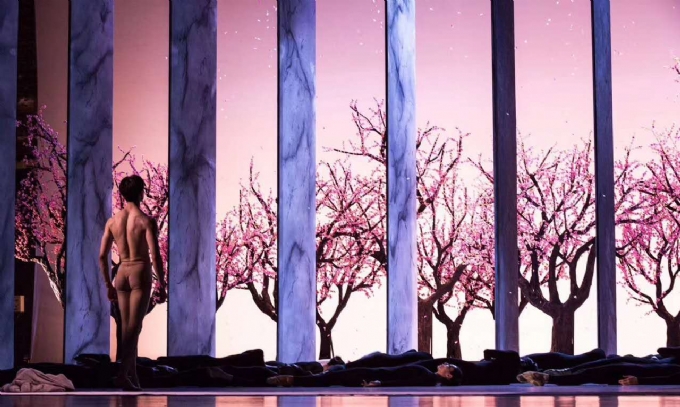Tang Yin

Tang Yin
唐寅
Ballet in two acts
World premiere in September 2017 at Suzhou Culture and Art Center Grand Theater, Suzhou
By Suzhou Ballet Theater
Artistic directors: Li Ying, Pan Jiabin
Libretto: Hu Leilei
Choreography: Li Ying, Pan Jiabin
Music: Edward Elgar, Johann Sebastian Bach, Arvo Pärt
Set and lighting design: Han Jiang
Costume design: Ran Weihong, Xu Jiajuan

The ballet reveals the inner struggle of Tang Yin (1470-1523), an intellectual of remarkable talents born and bred in Suzhou, the headquarters location of the ballet company that created this production. The libretto is based on Tang’s checkered life with fictional characters, and includes the major incidents that he encountered.

The production is quite unique for it sets a male character as its protagonist. Tang Yin, with the pride of family and full of anticipation of rank and fortune, is implicated in the examination fraud of the top-level civil-servant recruitment exam he attends for higher career mobilization.
Frustrated, the young man takes refuge in a brothel and finds his soul mate, the courtesan Shen Jiuniang. They leave the brothel and lead a reclusive life -- Tang earns a living as a painter. The serenity of life is broken by the Prince of Ning, who recruits Tang as his political consultant. Tang, it turns out, still cannot resist the temptation of social status and fame. He accepts the offer but soon discovers the prince’s scheme for usurpation of power. For self-protection, Tang pretends to be a lunatic and even runs naked in the streets. When he flees to his hometown of Suzhou, Tang finds his lover Jiuniang is dying in a rain of flower petals.

The dance mourns for the misfortune of Tang Yin, or anyone with extraordinary talents who is tormented by the adversity of life. The design of stage and costume helps to accentuate the hero’s struggle between earthly success and free release of personality and soul. The scarlet robe, hung high on the stage or clad by the dancer, is symbolic of social status and wealth in the feudal era of China, whereas the black ribbons, resembling ink strokes, identify an intellectual who rises and falls because of his superb literacy.

In addition to the standard ballet movements, modern dance elements have been incorporated. The multi-level dance vocabulary charges the solitary characters with emotional momentum, and metaphoric stage props, such as a shadow projected on a wall and a flowering tree beside a bed, provide an understated expression of the characters’ moods.
A different form of expression than China’s folk music or that played with traditional Chinese musical instruments, the music of Tang Yin is largely credited to Arvo Pärt, an Estonian composer renowned for his “holy minimalism” musical style.


